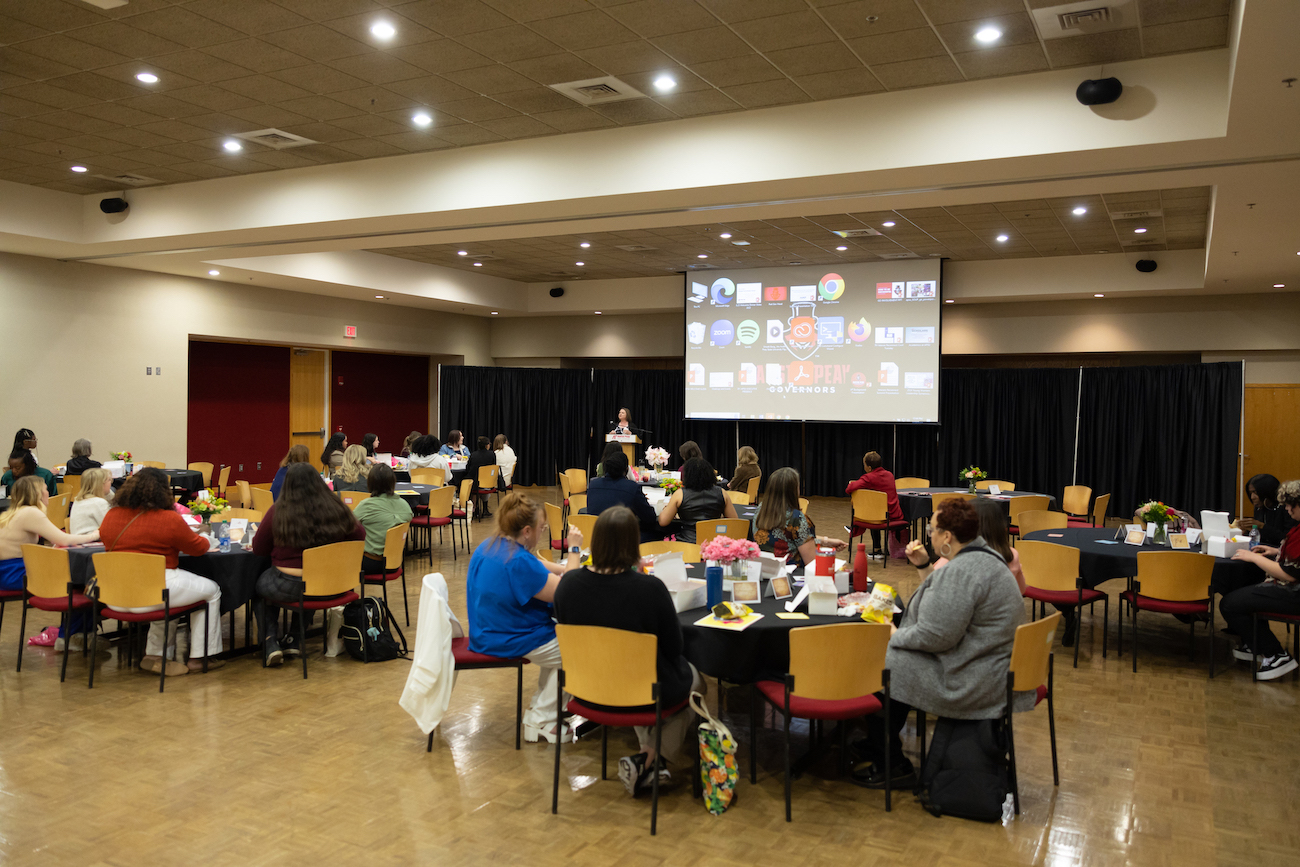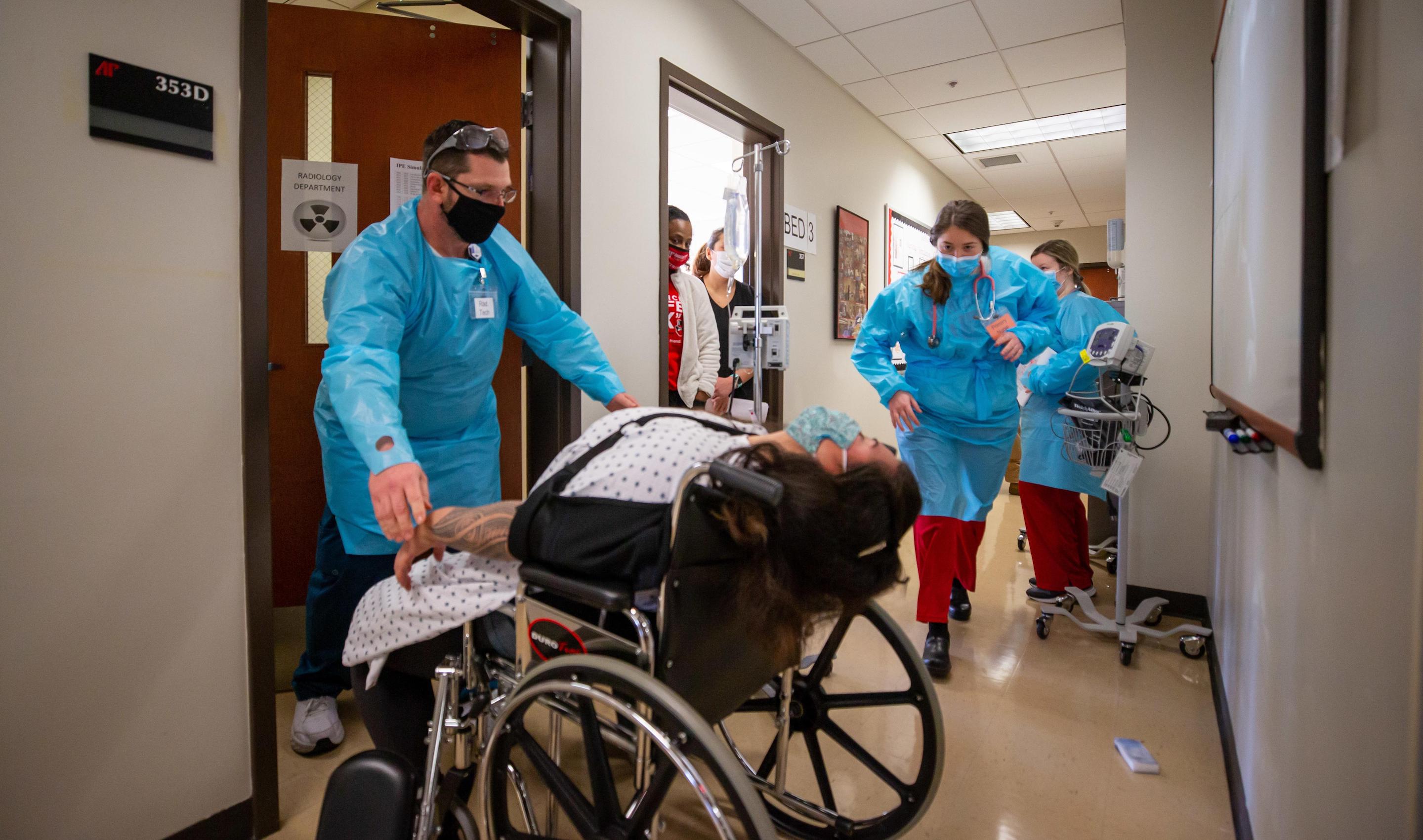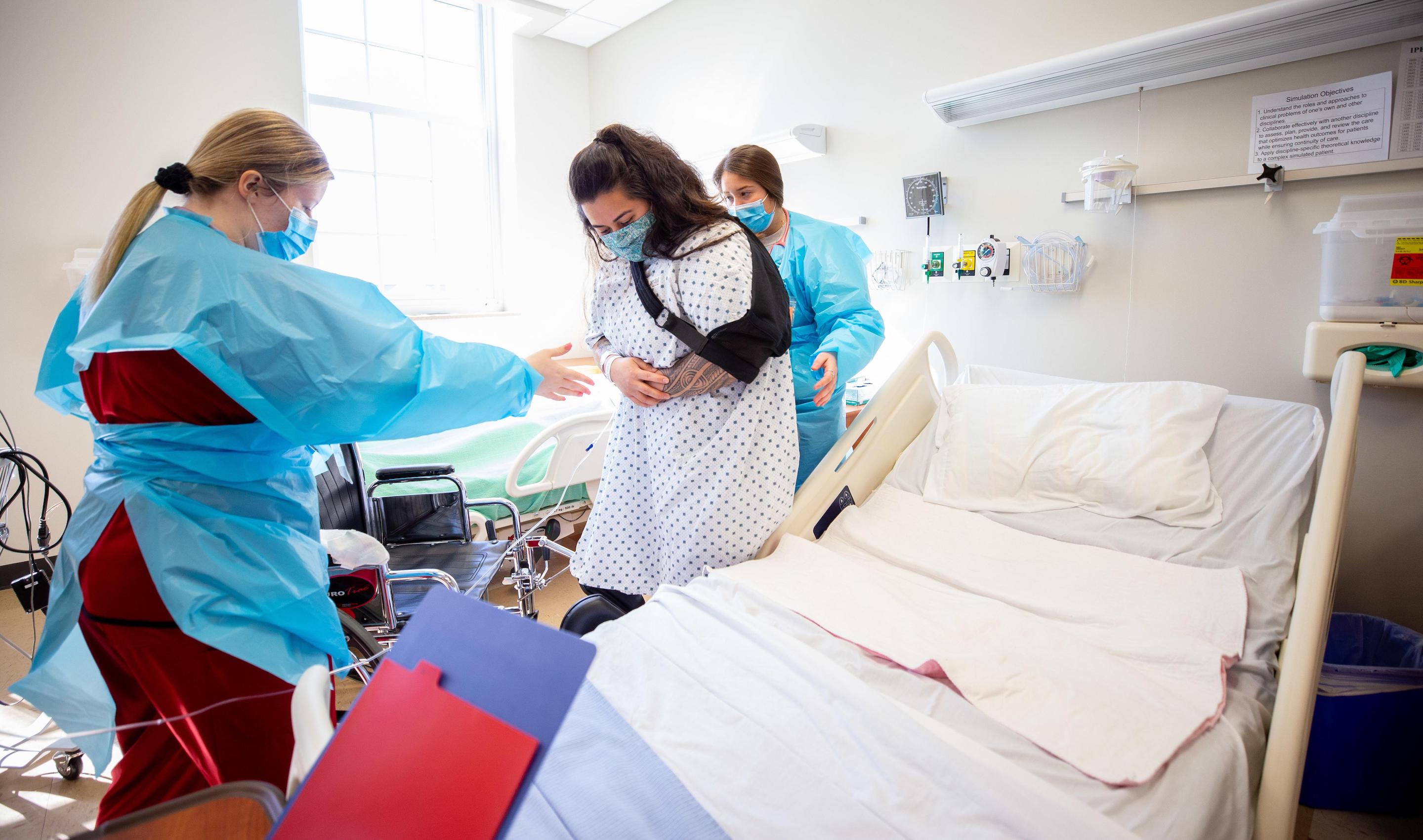Nursing, rad tech students see power of collaboration in interdisciplinary simulation
(Posted March 24, 2021)
Earlier this month, about 70 Austin Peay State University nursing and radiologic technology students navigated a two-day interdisciplinary simulation where they learned the real-life stakes of collaboration and communication.
The exercise was the first of its kind at Austin Peay, an APSU School of Nursing simulation that brought students from another college – the College of Science, Technology, Engineering and Mathematics – to the school’s simulation lab.
APSU Nursing Simulation Center’s Adrienne Wilk explained the high stakes exercise to the senior-level students before they stepped into the lab.
“Today is for us to improve patient safety and patient outcomes,” she said. “We want you to apply that discipline-specific theoretical knowledge that we’ve lectured to you over the last several months. We want you to apply that knowledge in a real-life clinical setting.”
The objectives of the simulation included understanding the roles each discipline has in a medical setting while collaborating and communicating effectively to improve patient outcomes.
“You have to learn how to communicate,” said Jennifer Thompson, program director for radiography at Austin Peay. “That is one of the biggest takeaways from these scenarios is the students realizing, ‘I had no idea how to talk to the nurses.’
“We need to know how to ask how to help the nurse, and the nurse needs to know how to ask what they can do for you so that you become a healthcare team, not just a rad tech and a nurse,” Thompson added.
Faculty have planned a second interdisciplinary simulation for about 80 junior-level nursing and rad tech students in early April.
Story continues below video
Students navigate COVID-19, seizure during simulation
The students separated into teams of two or three nursing students and a rad tech student then rotated among four stations covering two scenarios.
During the March 3-4 exercise, the students cared for a COVID-19 patient and a patient who had fallen and injured her shoulder during a seizure.
Each scenario mimicked real-life settings and included full patient charts and physician orders. Both patients, for example, had doctor’s orders for medical imaging.
In both scenarios, the nursing and rad tech students had to navigate each discipline’s roles while communicating clearly.
The students, for example, had to prepare the COVID-19 patient – played by a high-tech manikin with vital signs – for his diagnostic imaging. The students had to figure out how to position the manikin while keeping him comfortable and the health monitoring equipment secured and working.
A fellow rad tech student volunteered to play the patient in the other scenario and surprised the students with a seizure during medical imaging.
The students gathered with their instructors after each scenario to discuss where they succeeded and where they could improve.
“That’s where all the learning happens,” Wilk said, “especially for visual learners to see the whole patient scenario laid out.
Thompson agreed: “You don’t realize how much is happening during the simulation until you watch the debriefing.”
‘We need them to help with the patient’
Nursing senior Daketra Mason’s biggest takeaway centered on communication, especially between disciplines across campus. The School of Nursing is in the College of Behavioral and Health Sciences, and the rad tech program is in CoSTEM’s Department of Allied Health Sciences.
“Throughout the whole sim, I saw how important it is communicating with everybody, with other healthcare workers and the patient,” she said.
Rad tech senior Valerie Picataggio joined Mason and nursing senior Hannah McElroy in the scenario.
“In a real setting, (Valerie) wouldn’t have known what we knew about the patient so we would have had to explain to her what was happening,” Mason said.
The COVID-19 patient in the simulation, for example, had a pressure sore that restricted his movement.
“And from my perspective, I’m used to getting in and getting out, but I could put that patient’s safety at risk because I didn’t know about his pressure sore,” Picataggio said. “For the most part, we stay out of the nurses’ way, get the image and then leave.”
McElroy said the simulation allowed her to recognize the need to collaborate.
“We do work pretty closely with (rad tech),” she said. “They don’t need to stay out of the way, they’re not in the way, we need them to help with the patient as well.”
Picataggio also noted the importance of including a COVID-19 patient in the scenario.
“You don’t treat COVID patients differently just because they’re vented,” she said. “As long as we’re protecting ourselves and being smart, they shouldn’t feel any kind of aversion to them.
“That could be my family member lying there.”
To learn more
- For more about the Department of Allied Health Sciences, visit apsu.edu/allied-health/.
- For more about the School of Nursing, go to apsu.edu/nursing/.
News Feed
View All News
APSU graduate English major Maisie Williams is taking her talents to Boston University's MFA program this fall after earning a highly competitive poetry fellowship. As a first-generation college student, Williams credits her success to the opportunities and support she has received at Austin Peay.
Read More
This semester, five students from Austin Peay State University's Department of Political Science and Public Management interned in various legislative offices with the Tennessee General Assembly and gained valuable experience contributing to the workings of the assembly.
Read More
Austin Peay State University's 12th annual Young Women's Leadership Symposium was held on March 22. This year's theme, "Women who Advocate for Equity, Diversity, and Inclusion," proved to be a transformative experience for attendees, with each workshop and speaker instilling a sense of empowerment and motivation.
Read More

